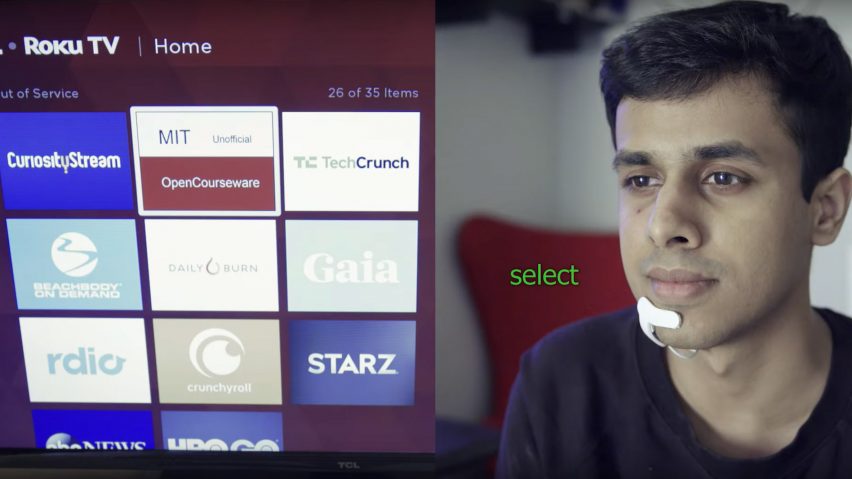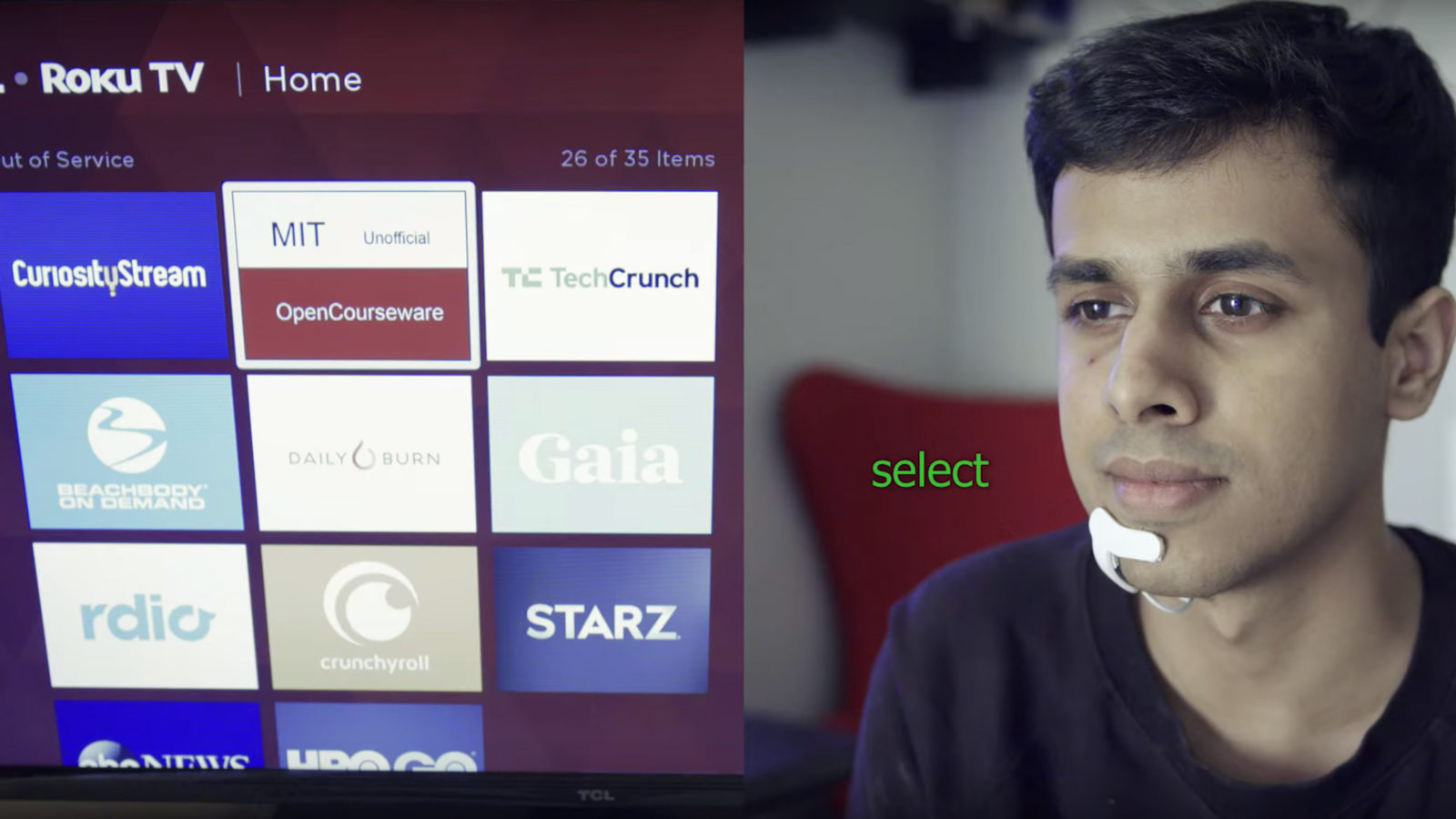Researchers at MIT Media Lab have developed a wearable gadget that transcribes and responds to conversations users have with themselves in their heads.
Comprised of a wearable device and a small computing system, AlterEgo enables users to “silently converse” with a computing device without talking or making any recognizable movements. It uses electrodes to pick up neuromuscular signals in the user’s jaw and face that are triggered by internal verbalisations. These signals are then sent to a machine-learning system that has been trained to associate certain signals with certain words.
A pair of bone-conduction headphones included in the device transmits vibrations through the bones of the face to the inner ear. As the headphones don’t obstruct the ear canal, this means the system can pass on information to the user without interrupting a conversation or interfering with the user’s aural experience.
By vocalizing internally, the user can communicate with other devices, the internet, AI assistants or applications to receive certain information, or make commands. The developers hope that this will fuse these digital interfaces into human personalities as a “second self.”
“The motivation for this was to build an IA device — an intelligence-augmentation device. Our idea was: could we have a computing platform that’s more internal, that melds human and machine in some ways and that feels like an internal extension of our own cognition?” said MIT research assistant Arnav Kapur.
If the user were to internally question, “what is the time,” the AlterEgo headset would register this, and feed the answer back to them through bone conduction. This means the user doesn’t have to look at a screen and type in words to find the answer to their question, or to control a device.
“We basically can’t live without our cell phones, our digital devices. But at the moment, the use of those devices is very disruptive,” said MIT professor Pattie Maes – who led the project.

“If I want to look something up that’s relevant to a conversation I’m having, I have to find my phone and type in the passcode and open an app and type in some search keyword, and the whole thing requires that I completely shift attention from my environment and the people that I’m with to the phone itself,” she continued.
For this reason, Maes and her students experimented with new technologies to develop something that would allow people to benefit from the information offered by these devices, but in a way that allows them to “remain in the present.”
AlterEgo is the latest concept to come out of MIT Media Lab – an interdisciplinary research laboratory at the Massachusetts Institute of Technology, founded in 1985.
By: Natashah Hitti
Source: https://www.dezeen.com/2018/04/09/mit-media-lab-alterego-device-technology/

